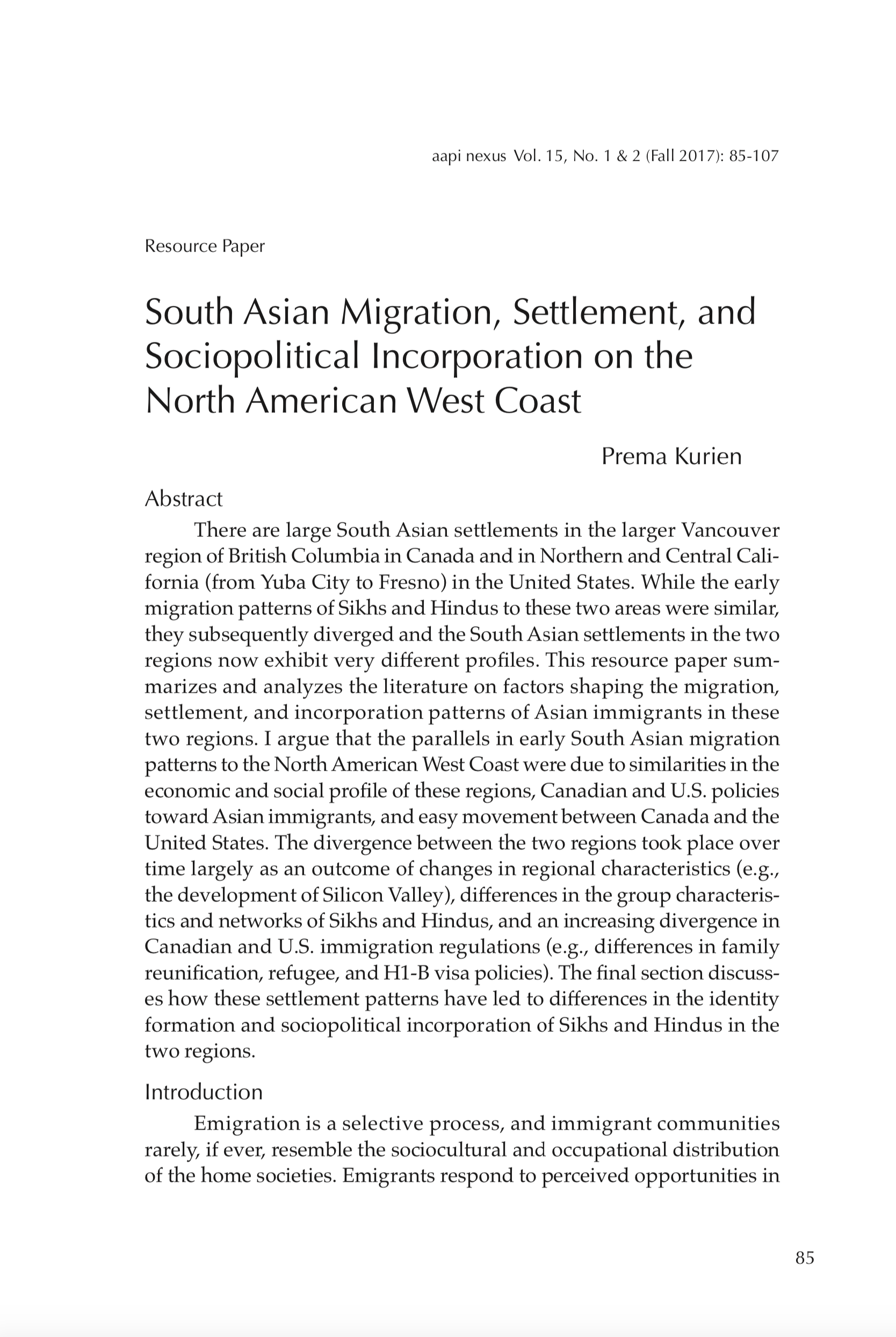“South Asian Migration, Settlement, and Sociopolitical Incorporation on the North American West Coast”
Volume 15:1-2, p. 85 (2017)
by Prema Kurien
ABSTRACT: There are large South Asian settlements in the larger Vancouver region of British Columbia in Canada and in Northern and Central California (from Yuba City to Fresno) in the United States. While the early migration patterns of Sikhs and Hindus to these two areas were similar, they subsequently diverged and the South Asian settlements in the two regions now exhibit very different profiles. This resource paper summarizes and analyzes the literature on factors shaping the migration, settlement, and incorporation patterns of Asian immigrants in these two regions. I argue that the parallels in early South Asian migration patterns to the North American West Coast were due to similarities in the economic and social profile of these regions, Canadian and U.S. policies toward Asian immigrants, and easy movement between Canada and the United States. The divergence between the two regions took place over time largely as an outcome of changes in regional characteristics (e.g., the development of Silicon Valley), differences in the group characteristics and networks of Sikhs and Hindus, and an increasing divergence in Canadian and U.S. immigration regulations (e.g., differences in family reunification, refugee, and H1-B visa policies). The final section discusses how these settlement patterns have led to differences in the identity formation and sociopolitical incorporation of Sikhs and Hindus in the two regions.
PREVIEW:

 Download
Download
Article Citation:
Prema Kurien (2017) South Asian Migration, Settlement, and Sociopolitical Incorporation on the North American West Coast. AAPI Nexus: Policy, Practice and Community: 2017, Vol. 15, No. 1-2, pp. 85-108.
